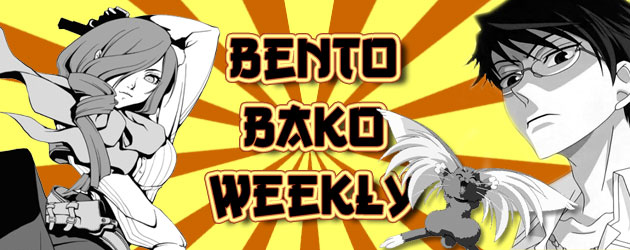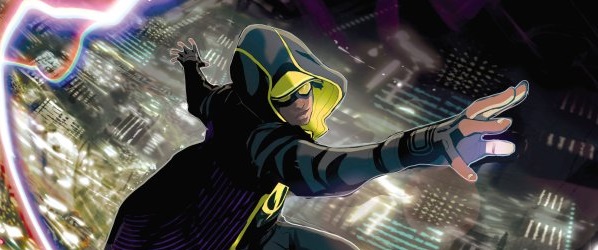 Title: Les Miserables
Title: Les Miserables
Author: Adapted by Crystal Silvermoon and Stacy King; art by SunNeko Lee; original story by Victor Hugo
Volume: One-shot omnibus, $19.99 (paperback; also available in hardcover)
Publisher: Udon Entertainment
Vintage: August 2014
Genre: Adaptation, historical, drama
Udon has recently launched their new Manga Classics line, which will publish adaptations of classic literature in a manga style (it even reads right to left). To kick off the line they’ve started with two literary powerhouses: Victor Hugo and Jane Austen (if you were at this year’s FCBD, you may have seen a preview of both books). Now, I’ve seen graphic adaptations of classic literature before, and for the most part they haven’t impressed me. After reading through Udon’s Les Miserables treatment (one of my favorite novels), I have to say they’ve put forth a very valiant effort. If you’ve read the novel, what this book depicts is fairly spot on. On top of that, it includes many minor details that other adaptations (like the musical) leave out. Did you know Eponine had a little sister? Because I completely forgot. I also forgot that Marius’s father was saved in battle by Mssr. Thénardier (he’s even drawn short (in comparison to his wife at least) and thin). I did remember that drunken Grantaire dies at Enjolras’s side, and guess who stands hand in hand in death with the leader of the ABC. The Elephant of the Bastille even makes an appearance in the background of one or two panels. There’s amazing detail here, but it’s still a 1,500 page novel condensed into a 330 page manga. There’s a lot left out (some of it rightfully so, like Hugo’s long and tedious exposés on the Paris sewer system and the conditions at local convents), but a lot remarkably crammed in, which is one of the problems. The pacing is incredibly quick, jumping from one plot point to the next, with little bursts of exposition here and there. It’s not difficult to follow, but it moves incredibly quickly, and feels a bit jerky at times. Ten or twenty more pages might have eased the flow. The fast pace leaves little time to get attached to characters, particularly Javert, whose characterization happens heavily toward the end of the volume in two or three pages. Javert is an incredibly complex character, in fact probably the most complex character in the entire book (even more than Valjean), and it’s a shame to see so very little of that touched on (there’s scant mention of his strong religious views, for example, which form the foundation for most of his decisions later on). They do at least mention his prison birth, as his time growing up around convicts gave him quite the prejudicial view of them. Personally I feel the book could do without a few of Cosette’s reaction panels, but I was never fond of her as a character anyway. Could also do without a couple of the more moe-like drawings of Eponine. Otherwise I found the artwork solid (except for the weird floating beard look, where facial hair doesn’t look like it’s actually growing out of the face). There’s some very nice background and detail work to be found, too. It’s obvious a lot of love and hard work went into this book.
If you’re not familiar with Hugo’s Parisian epic, it takes place over about seventeen years, chronicling Jean Valjean’s years in prison to his death, and everything in between: Valjean’s release from prison, the breaking of his parole, Jalvert’s obsessive hunt for Valjean, Valjean’s continual rises and falls, Fantine’s struggles, Cosette’s struggles, Cosette’s rescue by Valjean…then there’s a time jump to 1832. Anyone familiar with French history will know that is the year of the short-lived June Rebellion in Paris, which takes center stage in the latter half of the novel and manga. Marius, the man Cosette falls in love with, takes a role in this rebellion, and would have died without Valjean’s intervention (despite his reservations about letting his adopted daughter have a relationships with him). The novel was a critique on various things, including the injustices in the law and prison system (Valjean goes to prison for several years for stealing a single loaf of bread to feed his starving family), and the general plight of the poor (illustrated with the story of Fantine who goes from proper lady to street prostitute because of a pregnancy out of wedlock; as well as the downfall of the Thénardier family). And that’s all in the manga. It picks up on the themes of the novel well, though unfortunately without much depth due to the previously mentioned pacing. But, again, the writers manage to cram a LOT of the original novel into the manga, and it’s an impressive feat, if not a perfected one.
Kris
kristin@comicattack.net
@girlg33k_kris




FANTASTIC write-up!
I suppose I’ll need to check this out.
Also, what’s the Jane Austen manga? Did I miss that somewhere?
And finally, you said “Could also do without a couple of the more moe-like drawings of Eponine. ”
What’s that mean? What’s a moe?
The Jane Austen piece is Pride and Prejudice (though I believe they’re also doing Emma later this year).
And moe is a type of young, ultra-cute female. Basically a young, vulnerable looking girl that the reader is supposed to want to protect. It’s kind of difficult to describe.